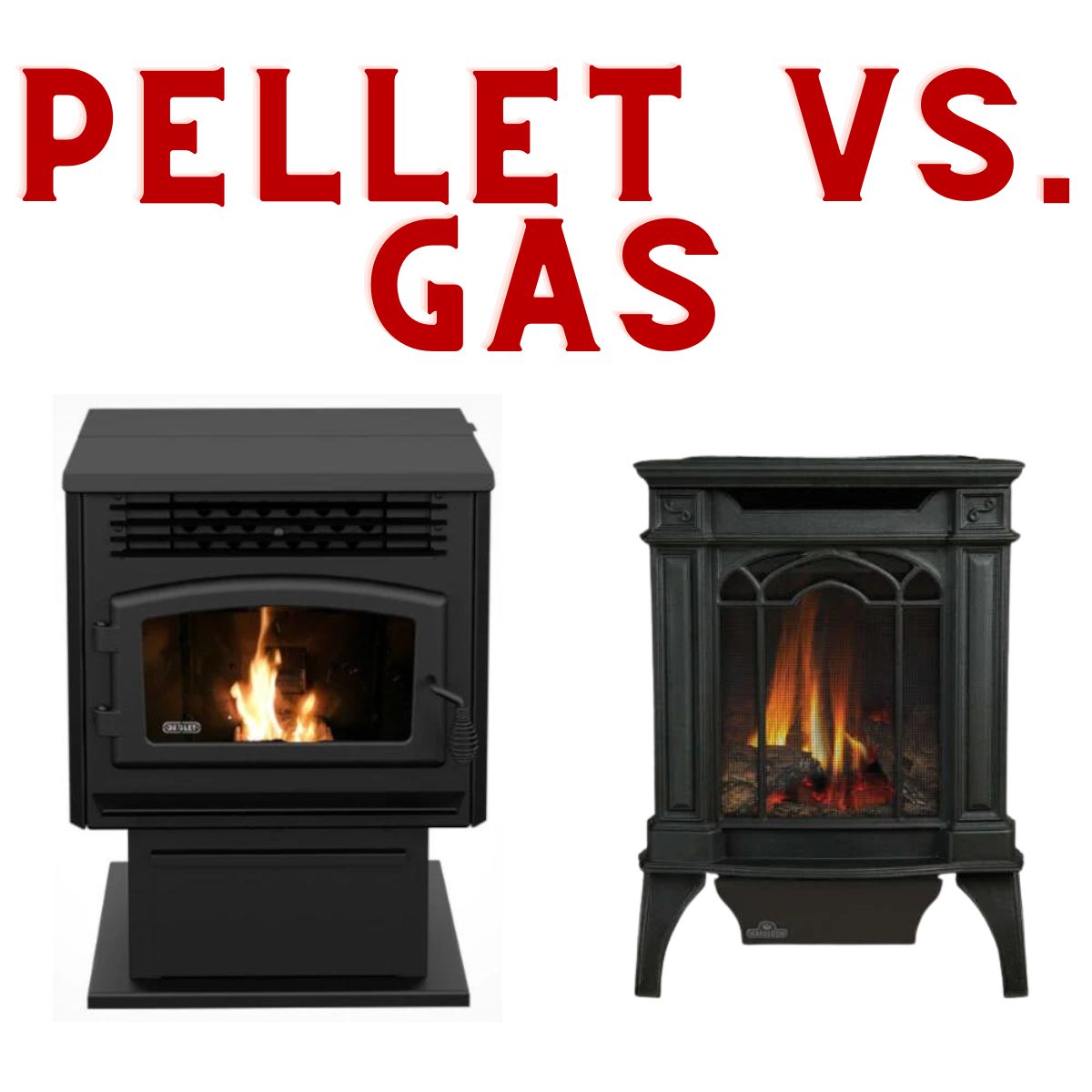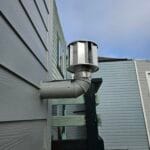If you’re thinking about adding a cozy, efficient heating option to your home, you’re likely weighing your choices. Two popular options stand out: the gas fireplace and the pellet stove.
Each offers its own unique benefits, but which one is the perfect fit for your home and lifestyle? Imagine walking into a warm room on a chilly day, feeling the gentle heat wrap around you, and knowing you’ve made the right choice.
Your decision could mean the difference between easy maintenance or worrying about fuel storage. It could impact your energy bills or even the ambiance of your living space. As you consider these options, you’re not just choosing a heating source—you’re choosing comfort and peace of mind. Dive into this comparison to discover which option will light up your home and your life just right.

Credit: www.rockfordchimneysupply.com
Energy Efficiency
Energy efficiency plays a crucial role in choosing between a gas fireplace and a pellet stove. Both options offer warmth and comfort. Yet, their efficiency varies based on fuel consumption, heating output, and environmental impact. Understanding these aspects helps make an informed choice.
Fuel Consumption
Gas fireplaces use natural gas or propane. These fuels are readily available. They provide consistent energy output. Pellet stoves, on the other hand, use compressed wood pellets. Pellets are renewable and generally cost less. Pellet consumption depends on the stove’s efficiency. Gas fireplaces typically consume more fuel. This can lead to higher costs over time.
Heating Output
Gas fireplaces provide instant heat. They quickly warm up a room. Pellet stoves take longer to heat. Yet, they offer a steady warmth. Pellet stoves often have higher BTU output. This makes them suitable for larger spaces. Both options can efficiently heat homes. Yet, the choice depends on space size and heating needs.
Gas fireplaces produce fewer emissions. They burn cleaner than wood. Yet, they rely on non-renewable resources. Pellet stoves burn wood, a renewable resource. They produce more emissions. Yet, they are considered carbon-neutral. Pellets are made from recycled wood. This reduces waste and promotes sustainability.
Installation Process
Choosing between a gas fireplace and a pellet stove involves more than just deciding how you want to heat your home. The installation process can significantly impact your decision, affecting not only your budget but also your living space and your level of involvement. Let’s dive into what you need to know about installing these two heating options.
Cost Considerations
The cost of installation can vary widely between a gas fireplace and a pellet stove. Gas fireplaces often require professional installation due to the complexities of connecting to a gas line. This can add to your upfront expenses, but it ensures safety and compliance with local codes.
Pellet stoves, on the other hand, might seem less expensive initially. However, consider the cost of venting and electrical connections. While these stoves can sometimes be installed without a professional, additional costs can arise if your home isn’t already equipped with the necessary infrastructure.
Space Requirements
Space is a crucial factor. Gas fireplaces are typically built into walls, making them space-efficient. They fit well in smaller rooms or areas where you want a sleek look.
Pellet stoves require more space. They are freestanding units, and you’ll need room for the stove itself as well as storage for the pellets. If you have limited space, think about how this will impact your room layout.
Professional Vs Diy
Are you comfortable with DIY projects, or do you prefer calling in the experts? Gas fireplaces generally necessitate professional installation because of the technical aspects involved. You want to ensure it’s done safely and correctly.
If you’re handy with tools, a pellet stove might be your project. Some models offer straightforward installation, suitable for a DIY approach. However, ensure you have the right tools and knowledge to avoid mishaps.
As you consider these options, ask yourself: Do you value ease and reliability over cost savings? Or is the challenge of a DIY project appealing to you? Your answers will guide your choice, ensuring you make a decision that fits both your lifestyle and home environment.
Operating Costs
Gas fireplaces generally have lower operating costs due to efficient fuel usage. Pellet stoves might cost more in maintenance and fuel. Each option offers its own advantages in terms of cost-effectiveness and energy consumption.
Operating costs are a crucial consideration for any heating appliance. Gas fireplaces and pellet stoves differ in various aspects. Understanding these differences can help in making informed decisions.Fuel Prices
Gas fireplaces use natural gas or propane. These fuels have fluctuating prices. Natural gas is often cheaper than propane. Pellet stoves use wood pellets. Pellet prices can vary by season. Pellets are generally affordable and stable.Maintenance Expenses
Gas fireplaces require regular inspections. Checking the gas line is important. Cleaning burners and vents is necessary. Pellet stoves need frequent ash removal. Cleaning the burn pot is essential. Both require annual professional maintenance.Longevity And Durability
Gas fireplaces have fewer moving parts. This can mean longer lifespans. Pellet stoves have mechanical components. They may need more frequent repairs. Proper maintenance extends their durability. Quality materials enhance lifespan for both.
Credit: www.regency-fire.com
User Convenience
Choosing between a gas fireplace and a pellet stove depends on user convenience. Gas fireplaces offer instant heat with simple controls, while pellet stoves require regular refilling but provide eco-friendly warmth. Each option has distinct benefits tailored to individual preferences.
When deciding between a gas fireplace and a pellet stove, user convenience is a crucial factor to consider. As you look to keep your home warm and cozy, understanding how each option suits your lifestyle is essential. Let’s break down the user convenience of both heating solutions under key aspects such as ease of use, temperature control, and cleaning and maintenance.Ease Of Use
Many people find gas fireplaces incredibly easy to operate. A simple push of a button or flick of a switch is all it takes to ignite the fire. This convenience makes it perfect for those spontaneous chilly evenings when you want warmth without the hassle. Pellet stoves, on the other hand, require a bit more effort but are still user-friendly. You need to load the pellets into the stove hopper, which can be a fun family activity. Once loaded, they offer a straightforward operation with digital controls.Temperature Control
Gas fireplaces often come with remote controls or wall-mounted thermostats. This feature allows you to adjust the temperature from the comfort of your couch. Imagine staying snug under a blanket while the room warms up just by pressing a button. Pellet stoves offer precise temperature control too, with programmable settings. You can set them to heat your home at specific times, ensuring you return to a warm house after a long day. Have you ever wished your living room was warm before you even get out of bed?Cleaning And Maintenance
Gas fireplaces are relatively low-maintenance. They don’t produce ash or soot, which means less frequent cleaning. Regular checks and occasional servicing keep them running smoothly. Pellet stoves require more maintenance due to ash production, but the process is straightforward. Emptying the ash pan and cleaning the burn pot can become a routine chore. This task can be satisfying and rewarding, knowing your efforts directly contribute to a warm home. Choosing between a gas fireplace and a pellet stove depends on your preferences for ease of use, temperature control, and maintenance. Which one aligns better with your lifestyle?Safety Features
Gas fireplaces offer automatic shut-off for safety, reducing risks of overheating. Pellet stoves feature temperature control systems, ensuring consistent heat without manual intervention. Both options prioritize user protection with modern safety mechanisms.
When considering heating options, safety is a top priority. Gas fireplaces and pellet stoves both offer efficient heating, but their safety features can significantly influence your decision. Understanding these safety aspects can help you make an informed choice for your home and family.Fire Hazards
Gas fireplaces are designed to minimize fire risks. They have sealed combustion systems that keep flames safely enclosed. This reduces the chances of sparks or open flames causing accidental fires. Pellet stoves, on the other hand, require regular maintenance to ensure safety. You must clean them frequently to prevent the buildup of flammable ash and debris. If not maintained properly, they might pose a higher fire risk compared to gas fireplaces. Have you ever wondered how often a fire hazard occurs with these appliances? Regular inspections and maintenance can drastically lower those chances.Ventilation Needs
Gas fireplaces generally need proper ventilation to operate safely. They often come with direct vent technology, which efficiently directs fumes outside. This setup minimizes indoor air pollution and maintains healthy air quality. Pellet stoves, however, have different ventilation needs. They require a vent to expel smoke and gases, which can be more complex to install. Proper installation and regular checks are crucial to prevent dangerous gas leaks. Do you have the right setup to accommodate these ventilation requirements? It’s essential to evaluate your home’s infrastructure before deciding.Child And Pet Safety
For families with kids and pets, safety around heating appliances is paramount. Gas fireplaces are often safer because they have glass fronts and are enclosed, reducing direct contact with flames. Pellet stoves might pose a greater risk due to their open flame and hot surfaces. You’ll need to set up barriers or safety gates to keep curious children and pets at a safe distance. Have you thought about how these safety features fit with your household’s needs? Ensuring a safe environment can provide peace of mind and prevent accidents. Both gas fireplaces and pellet stoves have unique safety features that cater to different needs. Consider these factors carefully to find the best heating solution for your home.Aesthetic Appeal
Gas fireplaces offer a sleek, modern look with clean lines, while pellet stoves provide a rustic, cozy charm. Both options enhance home aesthetics uniquely. Choose based on personal style preference.
When choosing between a gas fireplace and a pellet stove, their aesthetic appeal plays a crucial role in your decision-making process. Both options offer unique design benefits that can significantly impact the look and feel of your home. Whether you lean towards a modern vibe or a rustic charm, understanding the aesthetic differences can guide you toward the perfect choice.Design Options
Gas fireplaces often come with sleek, contemporary designs. They can easily fit into minimalist or modern homes. Manufacturers offer a variety of finishes like glass, metal, and stone to match your style. Pellet stoves, on the other hand, tend to have a more traditional appearance. They often feature cast iron and intricate designs. This makes them ideal for those who appreciate a classic, cozy look.Integration With Decor
Gas fireplaces offer flexibility, allowing easy integration with existing decor. Their clean lines and customizable options make them a seamless addition to any room. Imagine a wall-mounted gas fireplace that perfectly complements your minimalistic living room. Pellet stoves are more of a statement piece. They can serve as a focal point, especially in rustic or vintage-themed interiors. However, consider how their bulkier design might affect the flow of your space.Ambiance And Atmosphere
Gas fireplaces excel in creating a calm, elegant ambiance. You can adjust flame height and heat levels with a remote control. This ease of use enhances comfort and adds a touch of luxury to your evenings. Pellet stoves offer a different kind of warmth. The sound of the pellets crackling and the visible flames create a cozy, inviting atmosphere. It’s perfect for those who enjoy a more tactile and sensory experience. When thinking about the aesthetic appeal, ask yourself: Do you prioritize sleek design or a more traditional feel? How do these options fit with your current home decor? Your answers can lead you to a decision that not only warms your home but also enhances its beauty.Environmental Impact
Choosing between a gas fireplace and a pellet stove impacts the environment. Each option has distinct effects on the planet. Understanding these differences helps in making an eco-friendly choice.
Carbon Footprint
Gas fireplaces use fossil fuels. This increases their carbon footprint. Burning gas releases carbon dioxide. It contributes to greenhouse gases. Pellet stoves, on the other hand, use compressed wood pellets. These are carbon-neutral. They balance the carbon cycle. This reduces their impact on the climate.
Renewable Resources
Pellet stoves use renewable resources. Wood pellets come from sawdust and wood waste. This makes them sustainable. Gas fireplaces depend on non-renewable natural gas. Extracting gas harms ecosystems. It also depletes finite resources. Choosing pellets supports renewable energy.
Waste And Emissions
Gas fireplaces produce fewer emissions during use. But they still emit carbon monoxide. Pellet stoves emit more particulates. These can affect air quality. Yet, they produce less waste. Ashes from pellets can be composted. This reduces landfill waste. Carefully consider these factors for a greener choice.
:max_bytes(150000):strip_icc()/wood-stove-vs-pellet-stove-1907994_Final-42b88e7ee91f480ab535857878af03c3.jpg)
Credit: www.thespruce.com
Seasonal Performance
Choosing between a gas fireplace and a pellet stove for your home can be tricky, especially when considering how each performs throughout the year. Seasonal performance is a key factor to keep in mind, as it impacts both your comfort and energy bills. Let’s dive into how each option fares during different times of the year.
Winter Heating
When the temperature drops, your heating system’s efficiency becomes crucial. A gas fireplace offers the advantage of instant warmth. You can turn it on with the flick of a switch, and it heats up quickly, making it a reliable choice during those freezing winter nights.
Pellet stoves, on the other hand, require a bit more planning. They need to be filled with pellets and take some time to reach optimal temperature. However, they provide consistent, even heating, which can be comforting during long, cold spells.
Have you ever come home from work to a freezing house? With a gas fireplace, you get immediate relief, but a pellet stove rewards your patience with a steady warmth that lingers.
Summer Efficiency
During summer, you might not need heating, but efficiency still matters. A gas fireplace can be a bit of an energy hog due to pilot lights that might remain on, wasting gas and potentially increasing your bills.
Pellet stoves, in contrast, are typically turned off completely when not in use. This means they don’t draw energy unnecessarily, keeping your summer utility bills lower.
Consider the impact on your energy consumption during the off-season. Does the idea of an idle pilot light bother you, or are you more concerned about summer savings?
Climate Suitability
Your local climate plays a significant role in determining the best heating option. Gas fireplaces are ideal for milder climates where quick bursts of heat suffice. They’re less effective in maintaining warmth in consistently cold environments.
Pellet stoves excel in harsher climates, providing reliable heat over extended periods. They’re well-suited for areas where winter seems to overstay its welcome.
Think about where you live. Does your area experience harsh winters, or do you enjoy relatively mild seasons? This can guide you to the most practical choice for your home.
By evaluating the seasonal performance of both gas fireplaces and pellet stoves, you can choose the option that best aligns with your lifestyle and climate needs. Which feature is most important to you—quick warmth or long-lasting comfort?
Cost-benefit Analysis
Gas fireplaces offer convenience and cleaner burning. Pellet stoves provide efficient heating and use renewable materials. Comparing costs involves considering fuel expenses, installation, and maintenance. Both options have unique benefits that cater to different preferences and budgets.
When choosing between a gas fireplace and a pellet stove, understanding the cost-benefit analysis is crucial. Both options provide warmth and ambiance, but they come with different price tags and savings potential. Let’s dive into the initial investment, long-term savings, and resale value of each to help you make an informed decision.Initial Investment
The upfront cost of a gas fireplace can vary widely. Installing a basic model might cost less, but adding custom features can increase the price significantly. On the other hand, a pellet stove generally has a more predictable price range. While gas fireplaces often require professional installation due to venting systems, pellet stoves can sometimes be a DIY project. This might save you money initially, but consider the complexity and potential for errors. Have you factored in the cost of permits or additional materials?Long-term Savings
Gas fireplaces typically have lower operating costs if you have access to natural gas. However, pellet stoves can be more economical if you have a reliable supply of pellets. Think about the availability and price fluctuations of these fuels in your area. Pellet stoves might require more maintenance, like cleaning and occasional part replacement. Yet, they can offer efficiency that gas fireplaces sometimes lack. Have you considered how much time and effort you’re willing to invest in maintenance?Resale Value
A well-installed gas fireplace can add significant value to your home. Buyers often see them as a modern, low-maintenance option. But what about areas where pellet stoves are more popular? In regions where sustainable living is a priority, pellet stoves might increase your home’s appeal. They are often seen as an eco-friendly choice. Could this be a selling point in your neighborhood? When weighing the cost-benefit analysis of a gas fireplace versus a pellet stove, consider your personal needs and local market trends. What aligns best with your lifestyle and future plans?Frequently Asked Questions
How Does A Gas Fireplace Work?
Gas fireplaces use natural gas or propane. They ignite flames to produce heat. You can control them with a switch.
What Are The Main Benefits Of Pellet Stoves?
Pellet stoves are eco-friendly and efficient. They burn compressed wood pellets. This produces less smoke and ash.
Which Is More Cost-effective: Gas Or Pellet?
Pellet stoves are cheaper to run. Gas fireplaces have higher fuel costs. Consider installation and maintenance too.
Do Gas Fireplaces Need A Chimney?
Gas fireplaces don’t need chimneys. They use vent pipes. This makes them easier to install in any home.
Can You Use A Pellet Stove Indoors?
Yes, pellet stoves are safe indoors. They have exhaust systems. This prevents harmful fumes from entering your home.
Conclusion
Choosing between a gas fireplace and a pellet stove depends on your needs. Gas fireplaces offer easy use and minimal maintenance. Pellet stoves provide efficient heating and eco-friendly fuel. Both options create a warm, cozy atmosphere. Consider your budget and installation space.
Think about fuel availability in your area. Each option has pros and cons. Evaluate which features matter most to you. Make the choice that best suits your lifestyle. A warm home is waiting. Enjoy your new heating source. Stay cozy through the chilly months.




